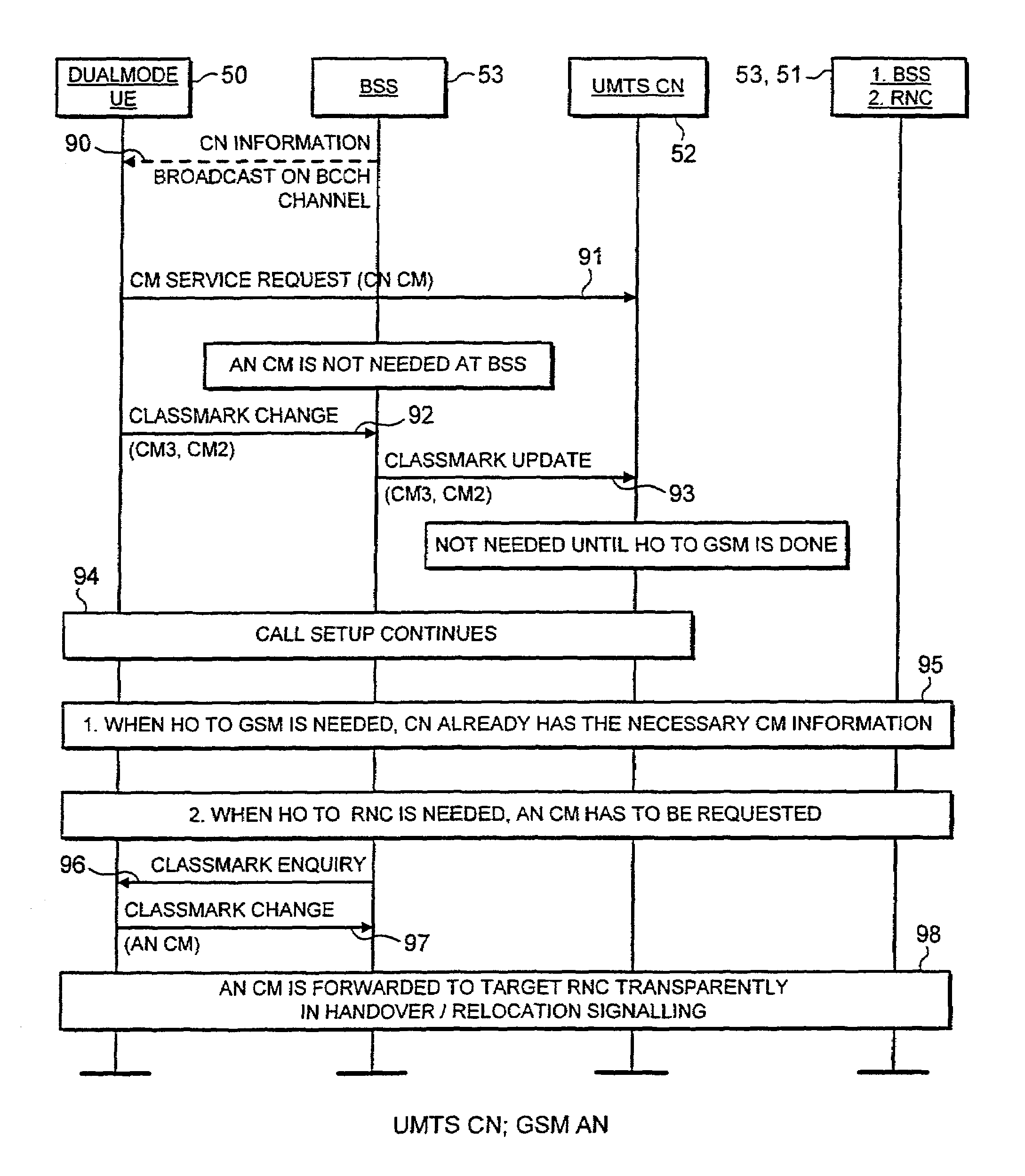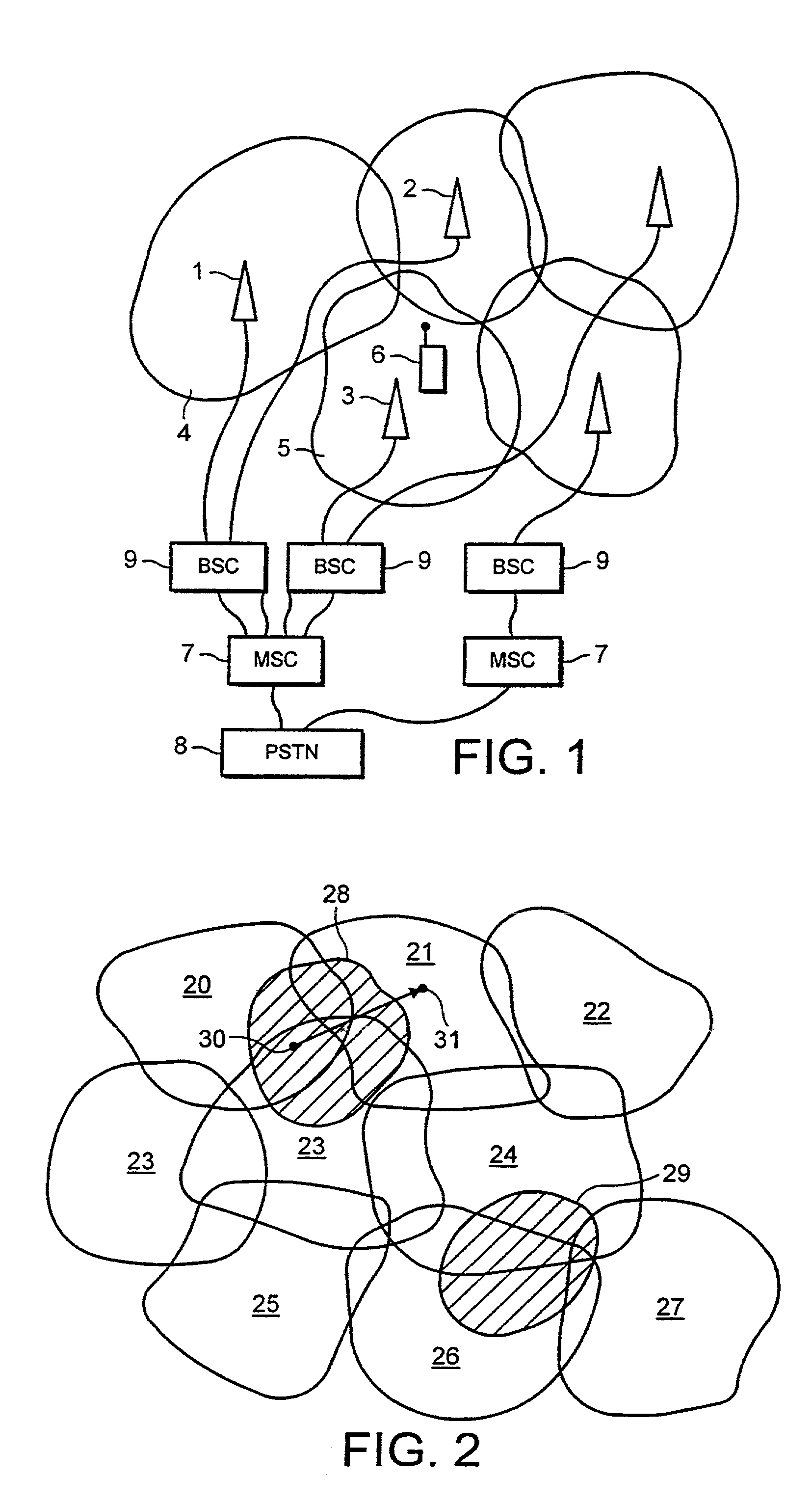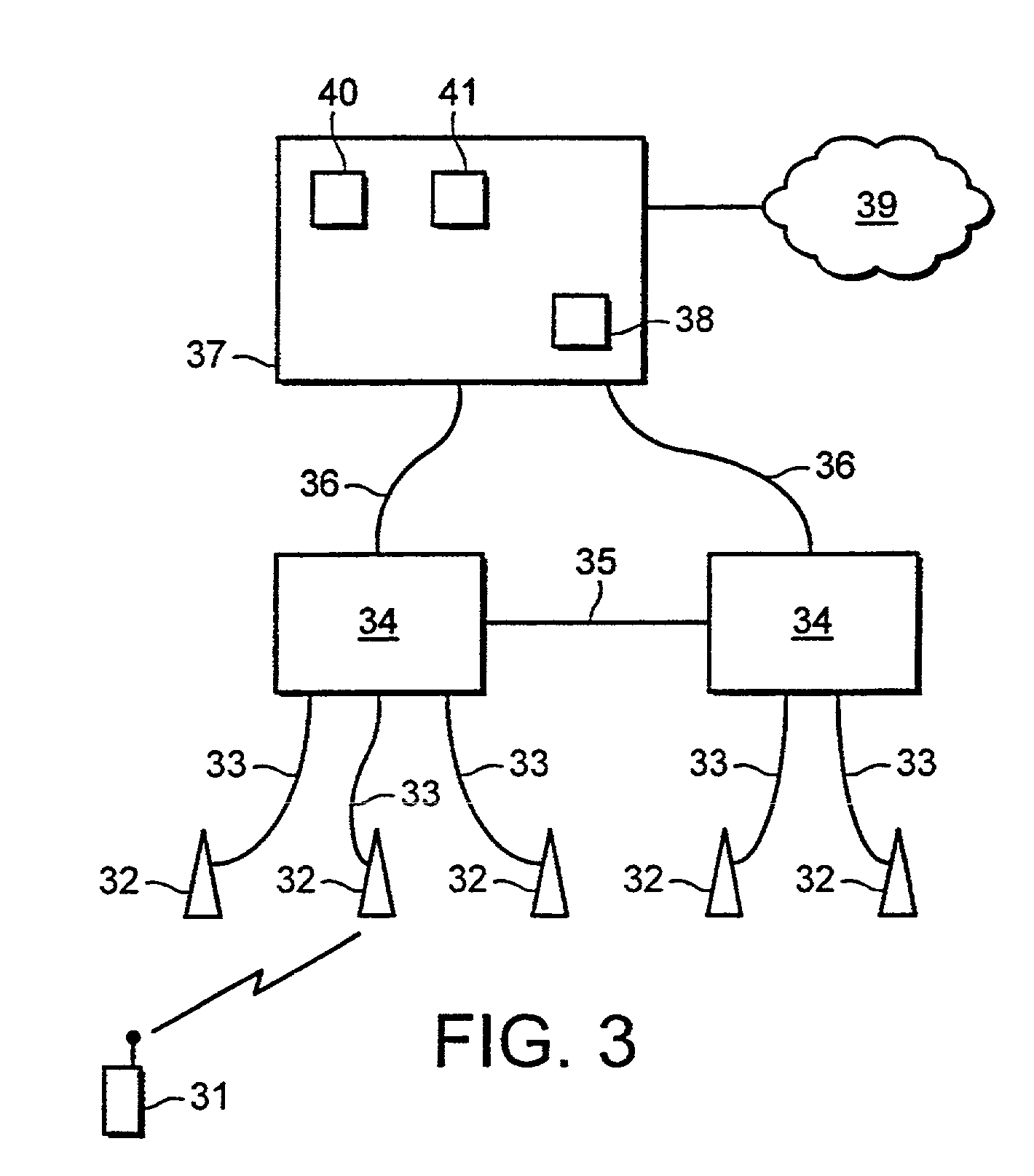Inter-system handover
a technology of inter-systems and handovers, applied in the direction of substation equipment, electrical equipment, wireless commuication services, etc., can solve the problems of affecting the service life the inability to meet the needs of customers, and the inability to meet the needs of the new network,
- Summary
- Abstract
- Description
- Claims
- Application Information
AI Technical Summary
Benefits of technology
Problems solved by technology
Method used
Image
Examples
Embodiment Construction
[0034]FIG. 3 shows generally the architecture proposed for UMTS. A mobile station (MS) 31 can communicate by radio with one or more base stations (BS) 32. Each base station is linked by an lub interface 33 to a single radio network controller (RNC) 34. Each RNC can be linked to one or more BSs. An RNC can be linked to another RNC by an lur interface 35. Each RNC is linked by an lu interface 36 to a core network (CN) 37. The CN includes one or more serving nodes that can provide communication services to a connected mobile station, for example a mobile switching centre (MSC) or a serving GPRS (general packet radio service) support node (SGSN)38. These units are connected by the lu interface to the RNCs. The CN is also connected to other telecommunications networks 39 such as fixed line networks or other mobile networks to allow onward connection of communications outside the UMTS network. The CN also includes other units such as a home location register (HLR) 40 and a visitor locatio...
PUM
 Login to View More
Login to View More Abstract
Description
Claims
Application Information
 Login to View More
Login to View More - R&D
- Intellectual Property
- Life Sciences
- Materials
- Tech Scout
- Unparalleled Data Quality
- Higher Quality Content
- 60% Fewer Hallucinations
Browse by: Latest US Patents, China's latest patents, Technical Efficacy Thesaurus, Application Domain, Technology Topic, Popular Technical Reports.
© 2025 PatSnap. All rights reserved.Legal|Privacy policy|Modern Slavery Act Transparency Statement|Sitemap|About US| Contact US: help@patsnap.com



